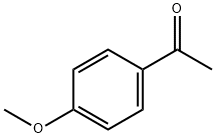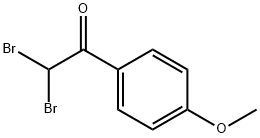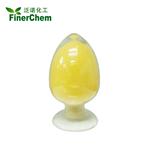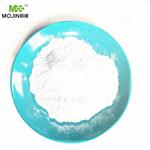Identification
CAS.No.:
100-06-1
FL.No.:
7.038
FEMA.No.:
2005
NAS.No.:
2005
CoE.No.:
570
EINECS.No.:
202-815-9
JECFA.No.:
810
Description
Yellowish-white crystals with an odor similar to that of p-methylacetopheneone, suggestive of hawthorn and floral note of heliotrope, possessing a bitter and unpleasant taste. Useful in vanilla, nut, tobacco and butter flavors.
Regulatory Status
CoE: Approved. Bev.: 10 ppm; Food: 20 ppm
FDA: 21 CFR 172.515
FDA (other): n/a
JECFA: ADI: Acceptable. No safety concern at current levels of intake when used as a flavoring agent (2001).
Usage
Reported uses (ppm): (FEMA, 1994)
Alcoholic.beverages
0.0001
0.0001
Gelatins,.puddings
0.2
0.2
Nonalcoholic.beverages
7.8
150
Natural occurrence
Reported found in European cranberry (Vaccinium oxycoccus L.), guava fruit (Psidium guajava L.), Vitis labrusca L., tomato, anise (Pimpinella anisum L.), mentha oils, grilled and roasted beef, sherry, cloudberry (Rubus chamaemorus L.), salted and pickled plums, Illicium verum and black chokeberry (Aronia melanocarpa ell.).
Chemical Properties
Colorless crystals or fused crystalline/Yellowish-white crystals mass. with an odor similar to that of p-methylacetopheneone, suggestive of hawthorn and floral note
of heliotrope, possessing a bitter and unpleasant taste. Useful in vanilla, nut, tobacco and butter flavors. Heavier than water, practically insoluble in water. Miscible with oils, soluble in alcohol, Relatively stable in soap and under similar,
mild-alkaline conditions.
Chemical Properties
WHITE CRYSTALS OR CRYSTALLINE POWDER
Chemical Properties
4-Methoxyacetophenone occurs in anise oil. It forms white crystals
(mp 38°C) with a sweet odor, reminiscent of hawthorn. 4-Methoxyacetophenone
is prepared by Friedel–Crafts acetylation of anisole. A modern process uses
??-zeolites as Friedel–Crafts catalysts in combination with a continuous flow technology.
4-Methoxyacetophenone is used in soap perfumes
Occurrence
Reported found in European cranberry (Vaccinium oxycoccus L.), guava fruit (Psidium guajava L.), Vitis
labrusca L., tomato, anise (Pimpinella anisum L.), mentha oils, grilled and roasted beef, sherry, cloudberry (Rubus chamaemorus
L.), salted and pickled plums, Illicium verum and black chokeberry (Aronia melanocarpa ell.).
Uses
4'-Methoxyacetophenone is a solid, pale yellow flavoring agent with a hawthornlike odor. It is soluble in most fixed oils and propylene glycol, and it is insoluble in glycerin and mineral oil. It is obtained by chemical synthesis. This flavoring substance or its adjuvant may be safely used in food in the minimum quantity required to produce its intended flavor. It can be used alone or in combination with other flavoring substances or adjuvants. It is also termed p-methoxyacetophenone.
Uses
Perfumery (for floral odors), flavoring.
Uses
4'-Methoxyacetophenone is used as a component of perfumes and as chemical intermediate in the manufacture of pharmaceuticals, resins, flavouring agents. And also used to study ruthenium catalyzed step growth copolymerization of 4?-methoxyacetophenone with α,ω-dienes to yield copolymers.
Preparation
From anisole and acetyl chloride in the presence of aluminum chloride and carbon disulfide; from anisole and acetic acid
in the presence of boron trifluoride.
Definition
ChEBI: A member of the class of acetophenones that is acetophenone substituted by a methoxy group at position 4.
Taste threshold values
Taste characteristics at 10 ppm: sweet, anisic, fruity, cherry with powdery vanilla nuances.
General Description
4′-Methoxyacetophenone undergoes biocatalytic enantioselective reduction using immobilized
Rhodotorula sp. AS2.2241 cells to yield (
S)-1-(4-methoxyphenyl) ethanol in a hydrophilic ionic liquid-containing co-solvent system
.
Flammability and Explosibility
Not classified
Safety Profile
Moderately toxic by
ingestion. Human systemic effects by
inhalation: pulse rate increase without fall in
blood pressure and blood pressure elevation.
A skin irritant. Flammable liquid. When
heated to decomposition it emits acrid
smoke and irritating fumes. See also
KETONES.
Purification Methods
Crystallise the ketone from diethyl ether/pet ether. [Beilstein 8 IV 340.]
Toxics Screening Level
The ITSL for 4-methoxyacetophenone has been changed from 0.04 μg/m3 to 0.1 μg/m3 based on an annual averaging time.





